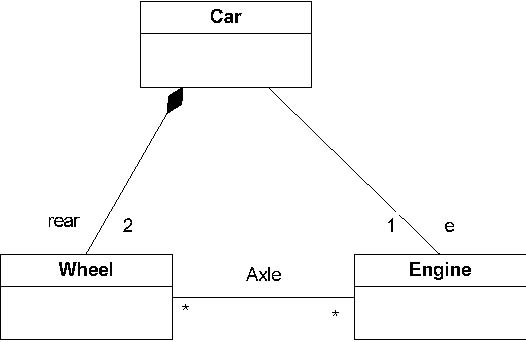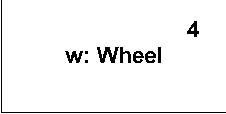*Semantics
When an instance of the containing classifier is created, a set of instances corresponding to its properties may be created
either immediately or at some later time. These instances are instances of the classifier typing the property. A property
specifies that a set of instances may exist; this set of instances is a subset of the total set of instances specified by
the classifier typing the property.
A part declares that an instance of this classifier may contain a set of instances by composition. All such instances are
destroyed when the containing classifier instance is destroyed. Figure 9.20 shows two possible views of the
Car class. In subfigure (i), Car is shown as having a composition association with role name rear to a class Wheel and an
association with role name e to a class Engine. In subfigure (ii), the same is specified. However, in addition, in subfigure
(ii) it is specified that rear and e belong to the internal structure of the class Car. This allows specification of detail
that holds only for instances of the Wheel and Engine classes within the context of the class Car, but which will not hold
for wheels and engines in general. For example, subfigure (i) specifies that any instance of class Engine can be linked to
an arbitrary number of instances of class Wheel. Subfigure (ii), however, specifies that within the context of class Car,
the instance playing the role of e may only be connected to two instances playing the role of rear. In addition, the instances
playing the e and rear roles may only be linked if they are roles of the same instance of class Car.
In other words, subfigure (ii) asserts additional constraints on the instances of the classes Wheel and Engine, when they
are playing the respective roles within an instance of class Car. These constraints are not true for instances of Wheel and
Engine in general. Other wheels and engines may be arbitrarily linked as specified in subfigure (i).

| Car | |||||
| rear : Wheel [2] | 2 | a: Axle | 1 | e : Engine |
(ii )
(i )
Figure 9.20 - Properties
